

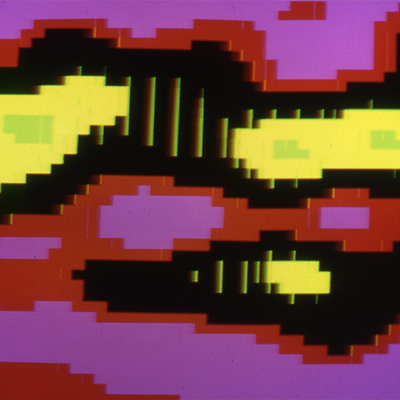





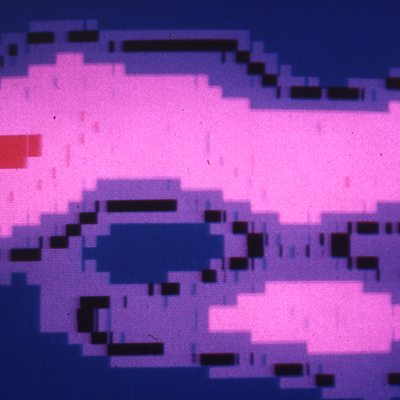

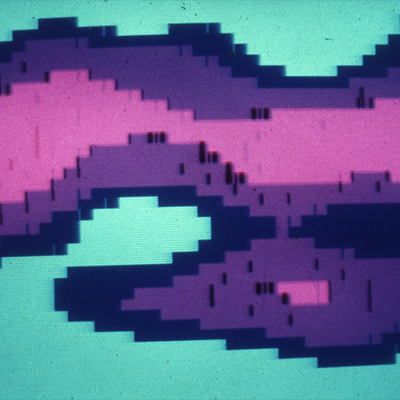

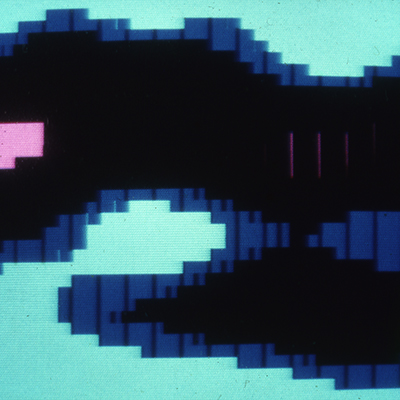



Digital Impressions Series (1973)
The Digitale Impressionen series were created with a picture processing system made by Siemens called ‘Bildspeicher N’. A punched tape was used for input; this was digitised and fed into the system as the original image. For this purpose, they were scanned with a light-sensitive cell and stored in raster form as a mosaic. The series was then created by electronically modifying the image pattern. Among these modifications were the smoothing of contours, the merging of scattered dots into patches, and the change and reduction of colours. The changes were carried out via the keyboard and could be followed in real time by observing the screen. Photographs of the motifs were taken from the screen using a camera.
The images were serially designed to be projected with the help of two Kodak projectors and a fading switch between them generating a soft fade of 3 seconds – and thus animated. At that time, moving graphics on the screen were not possible with computer screens. Only single images could be calculated.


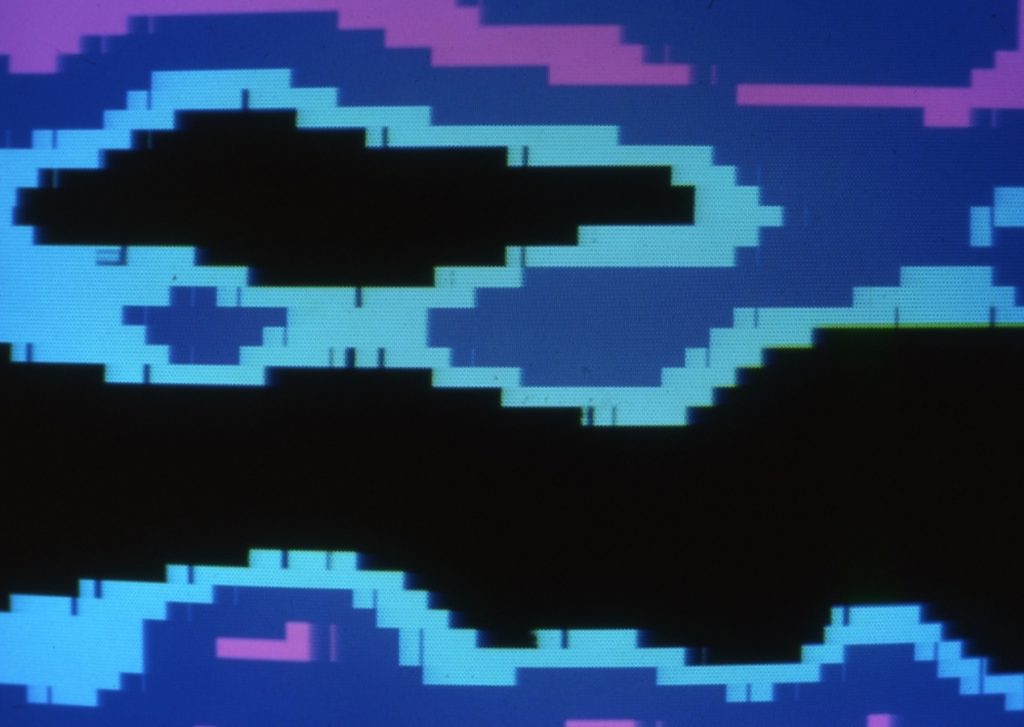



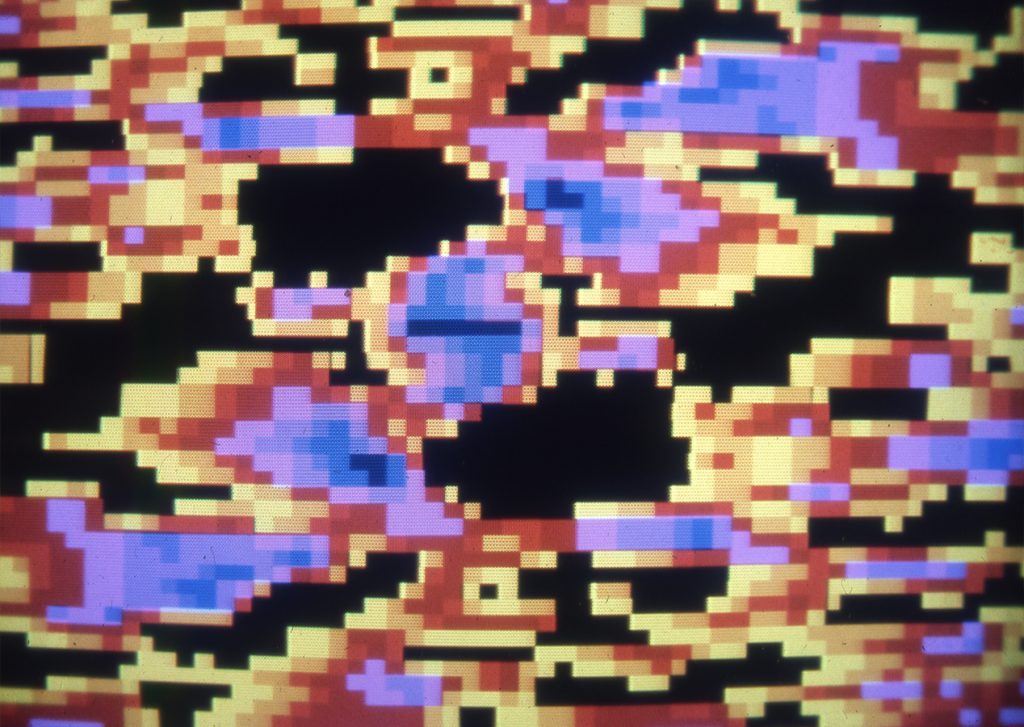



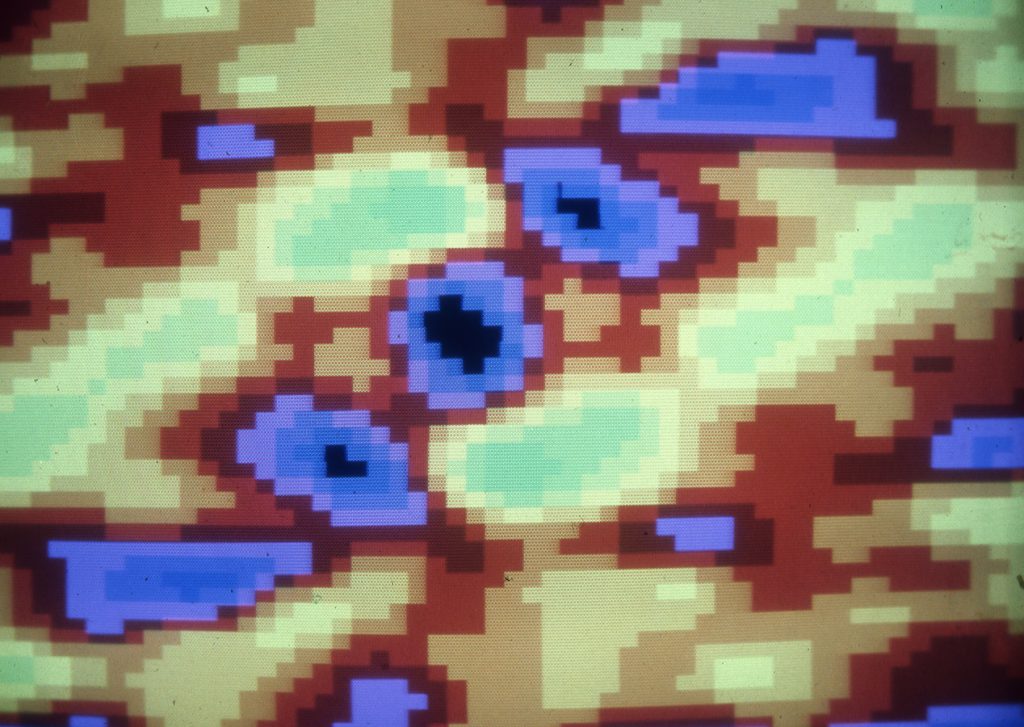

The series of images has historically been published under two names: Digital Impressions – as well as a part of the series as Symmetrical/Asymmetrical. Both series were primarily designed for use as a cross-fade series using soft Kodak cross-fading. The Siemens ‘Bildspeicher N’ was developed by Hans-Jürgen van Kranenbrock and Helmut Schenk in Erlangen.
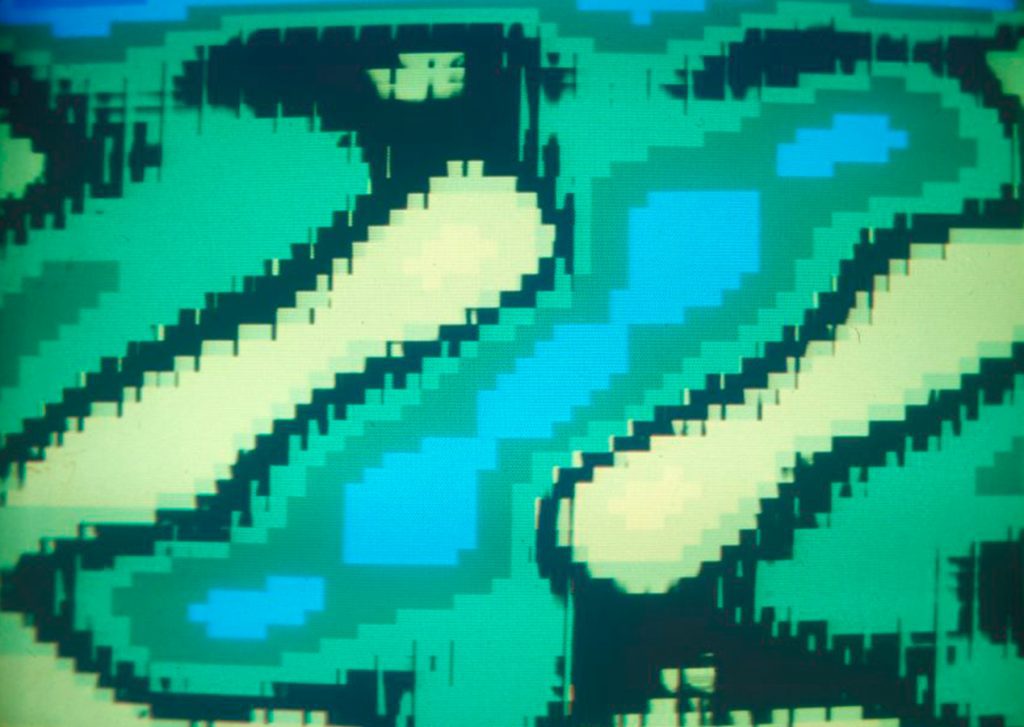

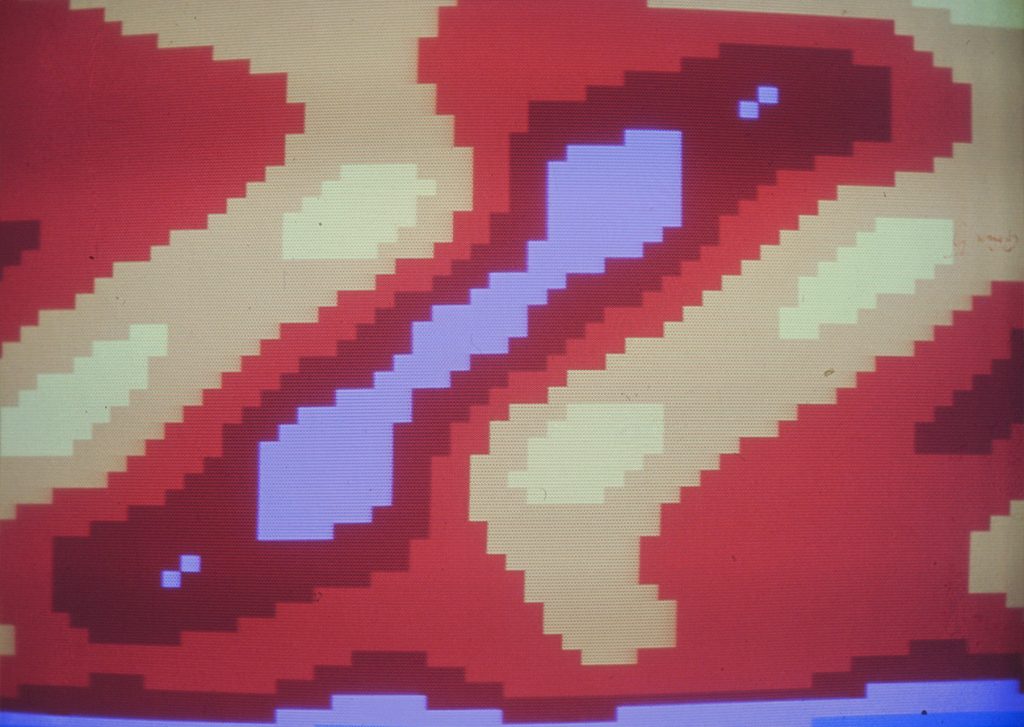

The images were serially designed to be projected with the help of two Kodak projectors and a fading switch between them in a soft fade – and thus to animate. At that time, moving graphics on the screen were not possible with computer screens. Only single images could be calculated.
